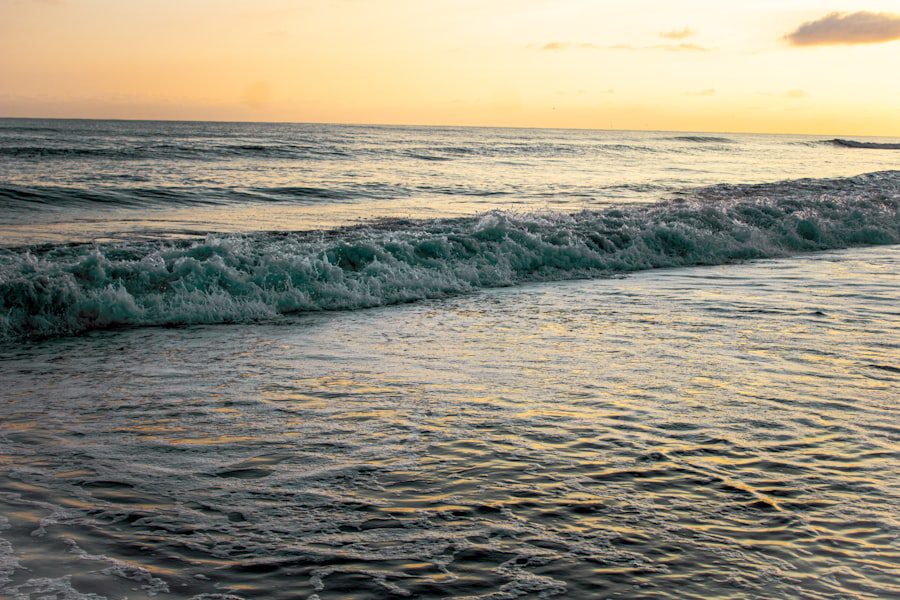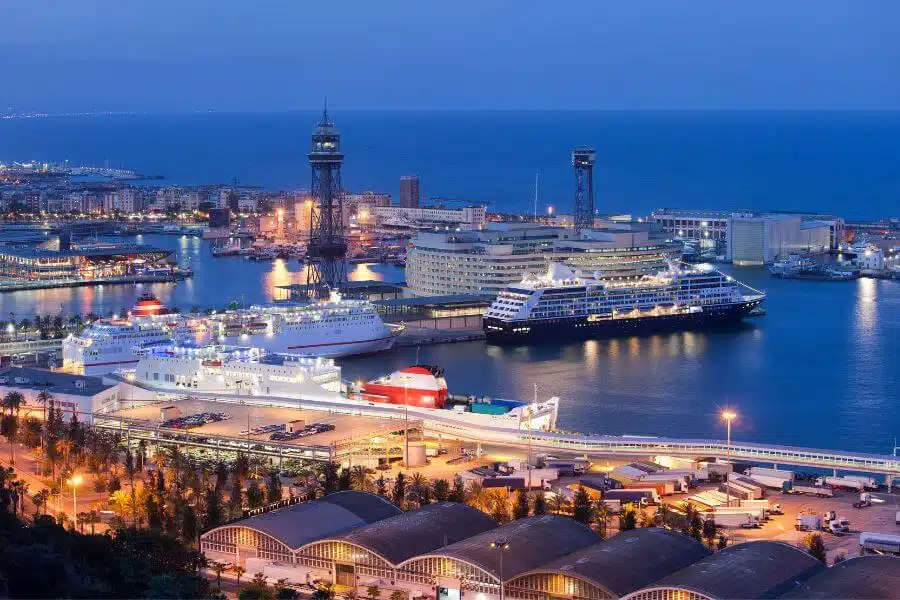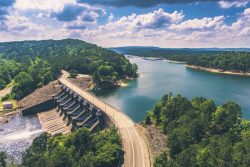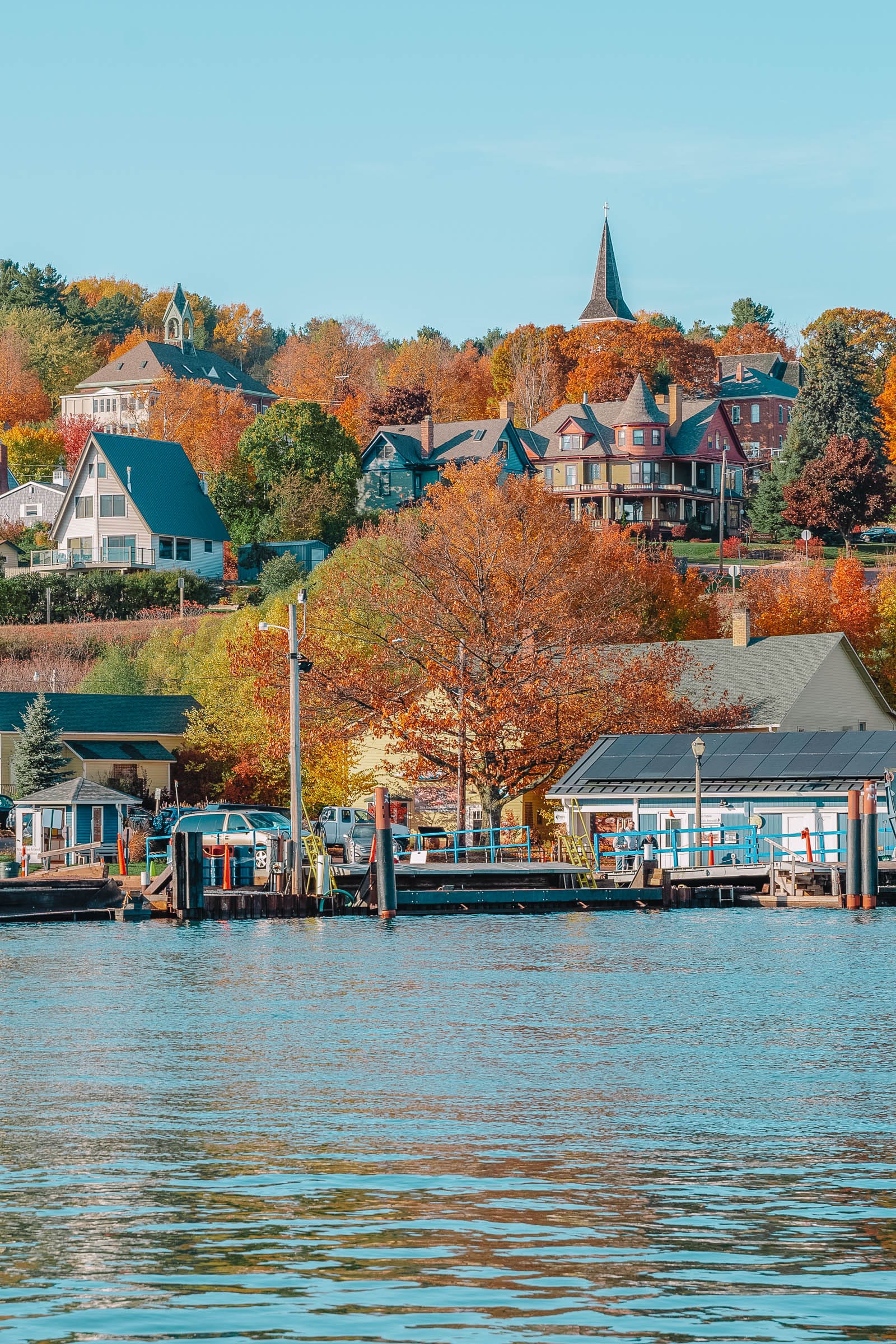Ireland’s tourism industry has been booming in recent years, with millions of visitors flocking to the country to experience its rich history, stunning landscapes, and vibrant culture. One of the most popular attractions in Ireland is the Wild Atlantic Way, a 2,500-kilometer coastal route that stretches from County Donegal in the north to County Cork in the south. This breathtaking journey allows travelers to explore Ireland’s rugged coastline, visit iconic landmarks such as the Cliffs of Moher and the Ring of Kerry, and immerse themselves in traditional Irish music and dance. In this article, we will delve into the importance of exploring the Wild Atlantic Way and highlight some of the must-see destinations along this stunning route.
Key Takeaways
- Explore the rugged beauty of the Wild Atlantic Way, a 2,500 km coastal route that showcases Ireland’s stunning coastline.
- Visit the iconic Cliffs of Moher, towering 700 feet above the Atlantic Ocean and offering breathtaking views of the surrounding landscape.
- Discover the enchanting Ring of Kerry, a scenic drive that takes you through picturesque villages, rugged mountains, and stunning coastal vistas.
- Experience the lively culture of Ireland through traditional music and dance, which can be found in pubs and venues throughout the country.
- Walk in the footsteps of ancient kings at the Hill of Tara, a historic site that was once the seat of power for the High Kings of Ireland.
Explore the Wild Atlantic Way
The Wild Atlantic Way is a truly unique experience that allows travelers to witness the raw beauty of Ireland’s coastline. The route takes you through charming coastal towns, picturesque fishing villages, and dramatic cliffs that plunge into the Atlantic Ocean. As you drive along this scenic route, you will be treated to breathtaking views of rugged mountains, pristine beaches, and crashing waves. The Wild Atlantic Way is not just a road trip; it is an adventure that immerses you in Ireland’s natural beauty and allows you to connect with its rich history and culture.
One of the highlights of the Wild Atlantic Way is the Cliffs of Moher. These iconic cliffs are one of Ireland’s most visited natural attractions, and for good reason. Standing at a height of 214 meters (702 feet) at their highest point, the cliffs offer awe-inspiring views of the Atlantic Ocean and the Aran Islands. Visitors can walk along the cliff edge and marvel at the sheer drop below them, or take a boat tour to see the cliffs from a different perspective. The Cliffs of Moher are not only a stunning natural wonder; they also hold great historical and cultural significance, with ancient forts and ruins scattered along the cliff tops.
Visit the Cliffs of Moher
The Cliffs of Moher are a must-visit destination for anyone traveling along the Wild Atlantic Way. These majestic cliffs are not only a natural wonder, but also an important part of Ireland’s cultural heritage. The cliffs have been featured in numerous films and TV shows, including Harry Potter and the Half-Blood Prince and The Princess Bride, and have become an iconic symbol of Ireland.
To make the most of your visit to the Cliffs of Moher, it is recommended to arrive early in the morning or late in the afternoon to avoid the crowds. The cliffs can get quite busy during peak tourist season, so arriving early will give you a chance to enjoy the stunning views in peace and quiet. It is also advisable to wear comfortable shoes and dress in layers, as the weather can be unpredictable on the cliffs. Finally, be sure to bring your camera to capture the breathtaking beauty of this natural wonder.
Discover the beauty of the Ring of Kerry
| Category | Metric |
|---|---|
| Distance | 179 km |
| Duration | 4-5 hours |
| Attractions | Gap of Dunloe, Muckross House, Torc Waterfall, Skellig Michael |
| Scenery | Coastal views, mountains, lakes, forests |
| Activities | Hiking, cycling, fishing, golfing, horse riding |
| Weather | Varies, but can be rainy and windy |
| Best time to visit | May-September |
The Ring of Kerry is another must-see destination along the Wild Atlantic Way. This scenic drive takes you through some of Ireland’s most stunning landscapes, including mountains, lakes, and coastal cliffs. The route is approximately 179 kilometers (111 miles) long and takes you through charming towns such as Killarney, Kenmare, and Cahersiveen.
One of the highlights of the Ring of Kerry is Killarney National Park, which covers an area of over 100 square kilometers (38 square miles). The park is home to Ireland’s highest mountain range, Macgillycuddy’s Reeks, as well as several beautiful lakes, including Lough Leane and Muckross Lake. Visitors can explore the park on foot or by bike, taking in the breathtaking scenery and spotting wildlife such as red deer and otters.
Another highlight of the Ring of Kerry is the Skellig Islands, which are located off the coast of County Kerry. These remote islands are home to a sixth-century monastic settlement, which is a UNESCO World Heritage Site. Visitors can take a boat tour to the islands and explore the ancient ruins, as well as enjoy stunning views of the Atlantic Ocean.
Experience traditional Irish music and dance
No trip to Ireland would be complete without experiencing traditional Irish music and dance. Irish music is known for its lively jigs and reels, played on instruments such as the fiddle, tin whistle, and bodhrán (a traditional Irish drum). Traditional Irish dance is characterized by quick footwork and intricate choreography, often performed in groups or in pairs.
There are many places in Ireland where you can experience traditional Irish music and dance. One of the best places to see a traditional Irish music session is in a pub, where local musicians gather to play together. Some popular pubs for traditional music include The Cobblestone in Dublin, Matt Molloy’s in Westport, and The Crane Bar in Galway.
If you’re interested in seeing a traditional Irish dance performance, there are several options available. The most famous Irish dance show is Riverdance, which has been performed all over the world. In Ireland, you can see traditional Irish dance performances at venues such as the Gaiety Theatre in Dublin and the INEC Killarney.
Walk in the footsteps of ancient kings at the Hill of Tara

The Hill of Tara is an ancient site located in County Meath, just north of Dublin. It was once the seat of the High Kings of Ireland and is steeped in history and mythology. The hill is said to be the burial place of over 140 kings and queens, and it is believed to have been a sacred site for thousands of years.
Visitors to the Hill of Tara can explore the ancient monuments and walk along the pathways that were once trodden by Ireland’s ancient kings. The most famous monument on the hill is the Lia Fáil, or Stone of Destiny, which is said to have been used in the coronation ceremonies of the High Kings. Other notable features include the Mound of the Hostages, a Neolithic passage tomb, and the Rath of the Synods, an ancient ceremonial enclosure.
To make the most of your visit to the Hill of Tara, it is recommended to take a guided tour. There are several tour operators that offer guided tours of the site, providing visitors with a wealth of information about its history and significance. It is also advisable to wear comfortable shoes and dress for the weather, as the site is quite exposed and can be windy.
Take a tour of Dublin’s historic landmarks
Dublin, Ireland’s capital city, is a vibrant and cosmopolitan destination that is steeped in history. The city is home to numerous historic landmarks that tell the story of Ireland’s past, from its Viking origins to its struggle for independence. Some of the must-see landmarks in Dublin include Trinity College, Dublin Castle, St. Patrick’s Cathedral, and Kilmainham Gaol.
Trinity College is Ireland’s oldest university and is home to the famous Book of Kells, an illuminated manuscript dating back to the 9th century. Visitors can take a guided tour of the college and see the Book of Kells on display in the Old Library.
Dublin Castle is another important landmark in the city. It was originally built as a defensive fortification in the 13th century and has since served as a royal residence, a military barracks, and a government building. Visitors can take a guided tour of the castle and explore its beautiful gardens and historic interiors.
St. Patrick’s Cathedral is one of Ireland’s most iconic landmarks and is said to be built on the site where St. Patrick baptized converts to Christianity in the 5th century. Visitors can take a guided tour of the cathedral and learn about its history and architecture.
Kilmainham Gaol is a former prison that played a significant role in Ireland’s struggle for independence. Many of the leaders of the 1916 Easter Rising were imprisoned and executed here. Visitors can take a guided tour of the gaol and learn about the events that took place there.
Sample the world-renowned Guinness beer
No trip to Ireland would be complete without sampling a pint of Guinness, the country’s most famous beer. Guinness has been brewed in Dublin since 1759 and is known for its distinctive dark color and creamy texture. The Guinness Storehouse, located at St. James’s Gate Brewery in Dublin, is one of Ireland’s most popular tourist attractions.
The Guinness Storehouse offers visitors a chance to learn about the history and brewing process of Guinness through interactive exhibits and displays. The highlight of the tour is the Gravity Bar, located on the seventh floor, where visitors can enjoy a complimentary pint of Guinness while taking in panoramic views of Dublin.
To make the most of your visit to the Guinness Storehouse, it is recommended to book your tickets in advance, especially during peak tourist season. This will ensure that you have a guaranteed entry time and can avoid long queues. It is also advisable to arrive early in the day to avoid crowds and have more time to explore the exhibits.
Go on a scenic drive along the Causeway Coastal Route
The Causeway Coastal Route is a scenic drive that stretches along the northern coast of Northern Ireland, from Belfast to Derry-Londonderry. This stunning route takes you through some of Northern Ireland’s most breathtaking landscapes, including rugged cliffs, sandy beaches, and picturesque villages.
One of the highlights of the Causeway Coastal Route is the Giant’s Causeway, a UNESCO World Heritage Site. This natural wonder is made up of over 40,000 interlocking basalt columns, which were formed by volcanic activity millions of years ago. Visitors can walk along the columns and marvel at their unique hexagonal shape.
Another highlight of the Causeway Coastal Route is the Carrick-a-Rede Rope Bridge. This suspension bridge spans a 20-meter (66-foot) chasm and offers stunning views of the surrounding coastline. Visitors can cross the bridge and explore the island of Carrick-a-Rede, or simply enjoy the breathtaking scenery from the mainland.
To make the most of your drive along the Causeway Coastal Route, it is recommended to take your time and stop at some of the charming towns and villages along the way. Some popular stops include Cushendun, Ballycastle, and Portrush. It is also advisable to check the weather conditions before setting off, as some parts of the route can be quite exposed and windy.
Visit the stunning Kylemore Abbey
Kylemore Abbey is a stunning Benedictine monastery located in Connemara, County Galway. The abbey is set on the shores of Kylemore Lough and is surrounded by beautiful gardens and woodlands. It was originally built as a private residence in the late 19th century and was later converted into a monastery.
Visitors to Kylemore Abbey can explore the historic house and learn about its fascinating history. The abbey also has a Victorian walled garden, which is home to a variety of plants and flowers. There are several walking trails around the estate, which offer stunning views of the surrounding countryside.
To make the most of your visit to Kylemore Abbey, it is recommended to take a guided tour of the house and gardens. This will provide you with a wealth of information about the history and architecture of the abbey. It is also advisable to wear comfortable shoes, as there is quite a bit of walking involved.
Take a boat tour to the Aran Islands
The Aran Islands are a group of three islands located off the west coast of Ireland, in Galway Bay. These remote islands are known for their rugged landscapes, ancient ruins, and traditional way of life. Visitors to the Aran Islands can take a boat tour from Galway or Doolin and explore the islands on foot or by bike.
One of the highlights of the Aran Islands is Dun Aengus, a prehistoric fort located on Inishmore, the largest of the three islands. This ancient fort is perched on the edge of a cliff and offers stunning views of the Atlantic Ocean. Visitors can walk along the cliff edge and explore the ruins of the fort, which date back to the Iron Age.
Another highlight of the Aran Islands is the traditional way of life that is still preserved on the islands. The islands are home to a small population of Gaelic-speaking residents who continue to live off the land and sea. Visitors can experience this traditional way of life by visiting local pubs, attending traditional music sessions, and exploring the islands’ unique landscapes.
To make the most of your visit to the Aran Islands, it is recommended to take a guided tour or hire a local guide. This will provide you with a deeper understanding of the islands’ history and culture. It is also advisable to bring comfortable shoes and dress in layers, as the weather can be unpredictable on the islands.
In conclusion, exploring Ireland’s top destinations is an experience that should not be missed. From the rugged coastline of the Wild Atlantic Way to the historic landmarks of Dublin, there is something for everyone in this beautiful country. Whether you’re interested in history, nature, or culture, Ireland has it all. So why not plan a trip to Ireland and discover its rich heritage and stunning landscapes for yourself? You won’t be disappointed.
FAQs
What is Emerald Isle?
Emerald Isle is a town located on the western end of Bogue Banks, a barrier island in North Carolina, USA.
What are some popular things to do in Emerald Isle?
Some popular things to do in Emerald Isle include visiting the beach, fishing, kayaking, paddleboarding, biking, hiking, and exploring the local shops and restaurants.
What is the best time to visit Emerald Isle?
The best time to visit Emerald Isle is during the summer months, from June to August, when the weather is warm and sunny. However, spring and fall can also be good times to visit, as the crowds are smaller and the weather is still pleasant.
Is Emerald Isle a family-friendly destination?
Yes, Emerald Isle is a family-friendly destination with plenty of activities for all ages, including beach activities, water sports, and family-friendly attractions like the North Carolina Aquarium at Pine Knoll Shores.
What are some nearby attractions to Emerald Isle?
Some nearby attractions to Emerald Isle include the historic town of Beaufort, the Cape Lookout National Seashore, and the Rachel Carson Reserve, a protected area of salt marshes and tidal flats.
Can you swim in the ocean at Emerald Isle?
Yes, you can swim in the ocean at Emerald Isle. The town has several public beach access points and lifeguards on duty during the summer months.
What is the weather like in Emerald Isle?
The weather in Emerald Isle is generally mild, with warm summers and cool winters. The average temperature in the summer months is around 80 degrees Fahrenheit, while the average temperature in the winter months is around 50 degrees Fahrenheit.
- 5 Fun Things to Do in Jindabyne - April 1, 2024
- 7 Fun Things to Do With Kids at the Park - April 1, 2024
- 5 Fun Things to Do in Owen Sound This Weekend - April 1, 2024




